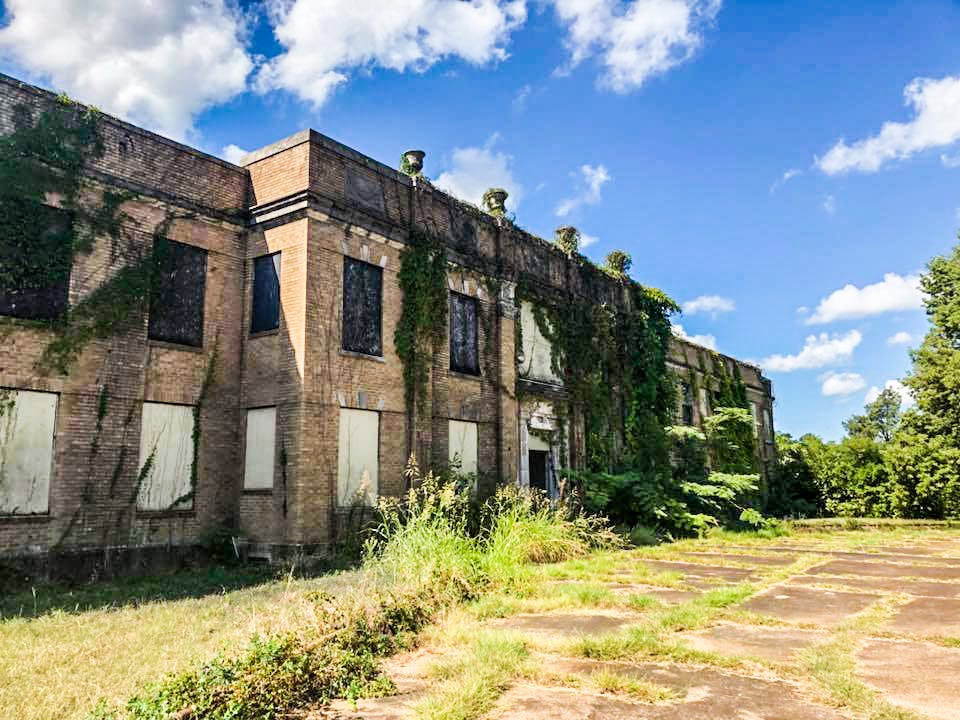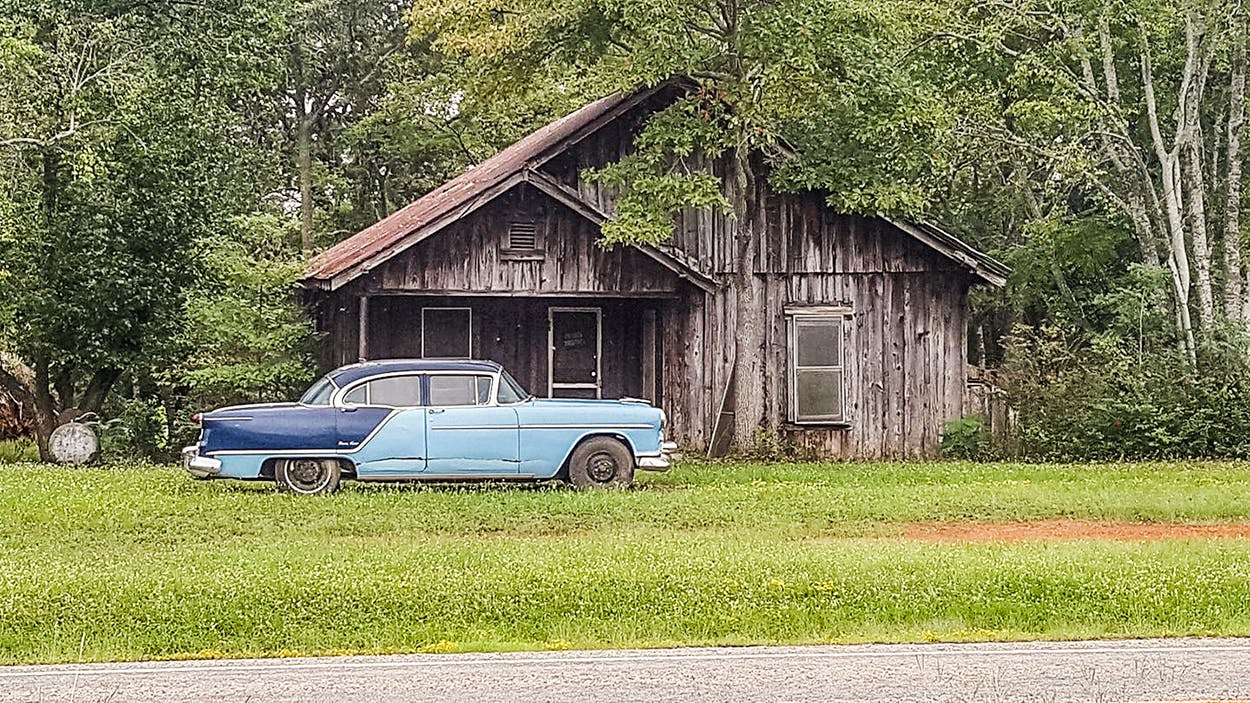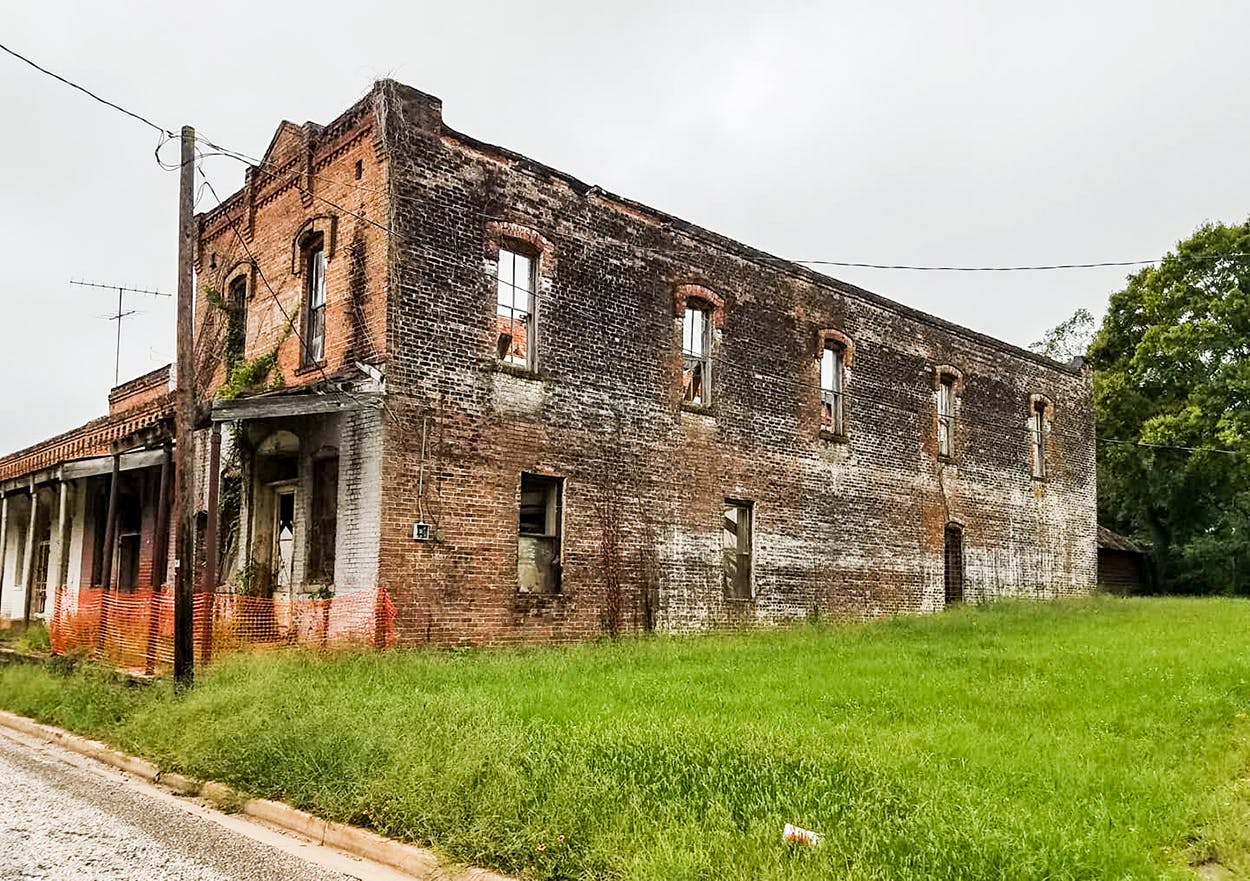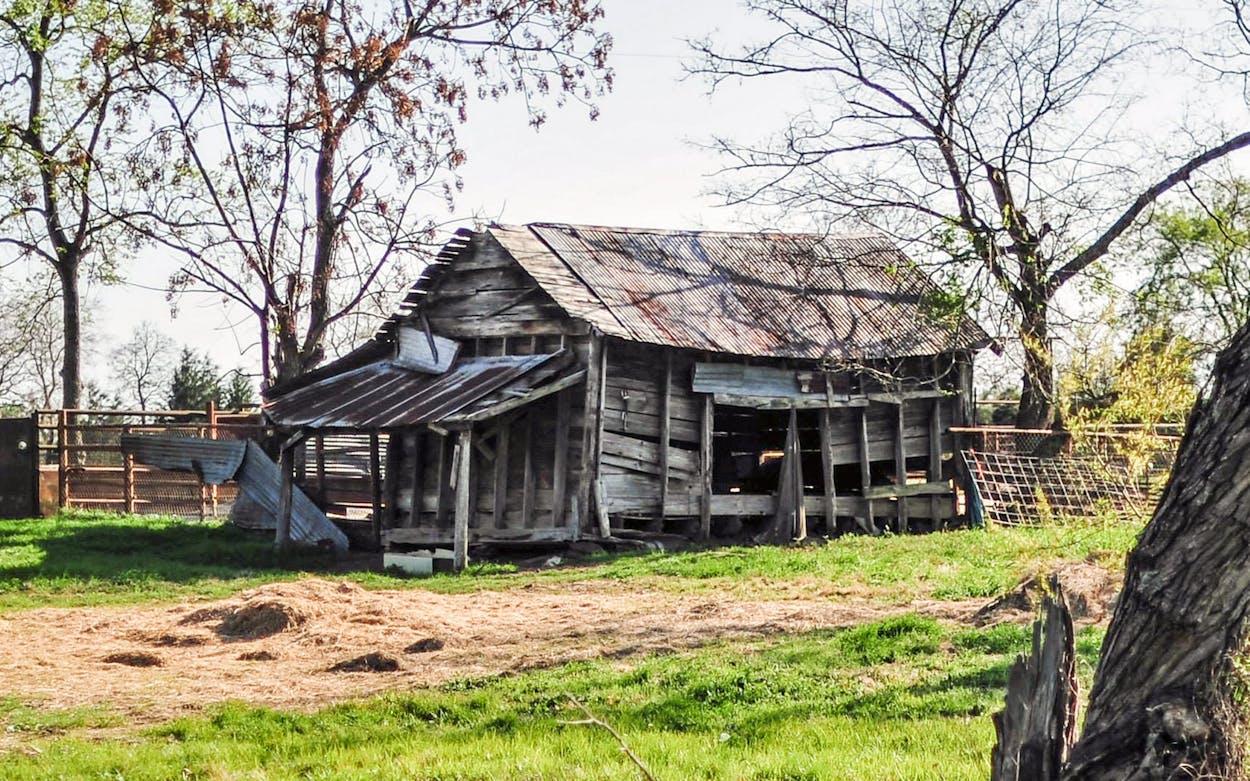When Bobby Miller was a kid, he and his cousin Andrew Holloway used to while away the hours exploring the vast landscape of their East Texas community outside of Jacksonville. They found beauty not just in nature, but the abandoned houses, barns, sharecropper shacks, and other buildings that had been left behind by the people who owned them.
“We’d leave on our bicycles in the morning and come back when it was time to eat,” Miller says. “It’s just what two kids in the country do to pass the time. We’d pass barns and houses that looked like they needed to be explored, so we’d check out these places—and I never really got away from that.”
Five decades later, Miller and Holloway, along with Bindi Caveness, a cousin of Holloway’s on the other side of the family, are still looking for the abandoned spaces in East Texas. And now, Miller is discovering his passion is shared more widely than he ever anticipated. Miller launched the Facebook group Abandoned East Texas in summer 2017 as a way to share photos of the places he found in the area with friends and family. He added a few dozen people to the group, posted in it when he found something interesting, and didn’t give it much more thought.

But after a local television station near Longview ran a story about his group, he saw the membership balloon—hundreds, then thousands, of people joined up and began sharing photos of their own. Soon, aided by Facebook’s algorithm, thousands of people end up joining each month. The current membership hovers just under 34,000. Miller—who now lives near Lafayette, Louisiana, and plans the route he’ll take to visit based on country roads—brought Holloway and Caveness in to help him moderate the group.

There are rules to Abandoned East Texas—chief among them, what constitutes “East Texas.” According to a map Miller pins to the top of the group’s “discussion” page, nothing further west than Henderson County, with cities like Paris and Gun Barrel City pushing the western edge. (Huntsville, for example, doesn’t qualify.) The rest of the boundaries are pretty clear—the edges of Texas tend to define themselves—although Miller did make an administrative decision to include Liberty and Chambers Counties. “I’ve spent a lot of time down in that area, and they should be East Texas,” he says. “But the other requests, so far, we’ve declined, just to maintain the purpose of the group, which is East Texas.” Other group rules include not posting addresses or specific locations (to cut down on graffiti) and maintaining a “no drama” policy (i.e. no political commentary).
The centerpiece of the group are the photos, of course. The buildings range widely in age—there are sharecropper shacks that date back to the late 1800s and restaurants that look like they’re from the 1990s—and the environments showcase the variety of landscapes a person can find in East Texas. There’s the Gulf Coast and the Sabine River; there are glorious mansions on lush, overgrown fields of green; there are empty department stores in larger cities like Port Arthur; and an old saw mill buried deep in the Angelina National Forest.

These days, Miller tends to get permission from the property owners before he ventures onto their land—which is one of the ways, besides the existence of Facebook, that his hobby has changed since he was a kid. “The roads are now paved, and times have changed,” he says. “It was simpler, back in the sixties—the farmers and ranchers saw us so much, it wasn’t a big deal if we were up in somebody’s barn. Nowadays, I recommend people ask permission if you’re doing anything besides taking a picture from a highway.”








